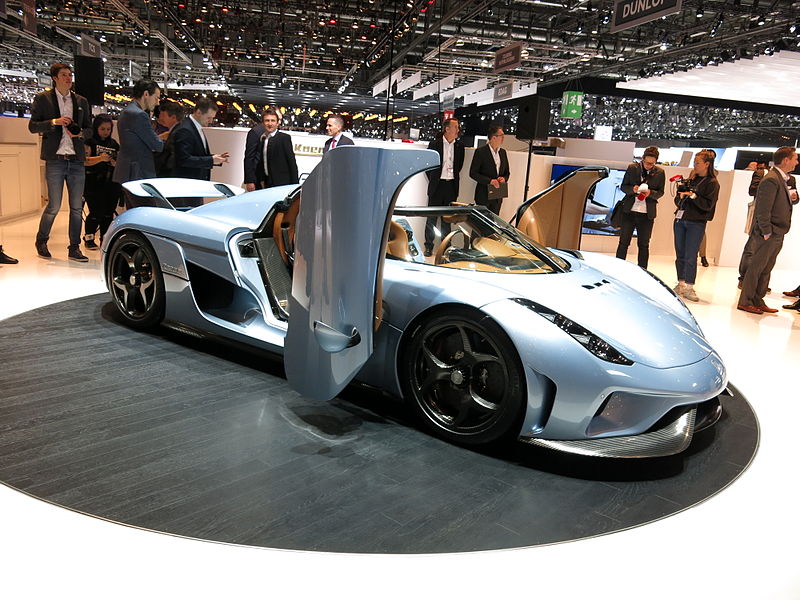 |
| Source: Norbert Aepli via Wikimedia Commons CC BY 4.0 |
Hybrids. With the world shifting their attention to fuel efficiency, automakers look at every nooks and cranny to meet the demands of fuel-conscious consumers. One of the alternatives is the hybrid technology, where electric power join forces with fossil fuel.
How does hybrid improve fuel efficiency? Well, hybrid cars can run on electric power only at low speed, with the internal combustion engine (ICE) kicking in at high speed, a boon for those whose life is made up of exhausting bumper-to-bumper traffic. Such is the benefit of hybrid tech that even the likes of Ferrari LaFerrari, Porsche 918 Spyder, BMW i8 and McLaren P1 are going hybrid. Thanks to hybrid tech, Porsche claims their 887 bhp 918 Spyder can do 3L/100km.
Despite that, one marque express their doubts on hybrids. The marque in question is Koenigsegg, a Swedish supercar brand.
Hybrids add weight, which makes sense due to the extra weight from the electric motor and battery pack. Koenigsegg's policy is weight reduction.
Obviously getting rid of electric motor and battery pack will not make a hybrid, so in the marque's latest hybrid model, christened the Regera, the gearbox is omitted. Yes, you heard it right, there is no multi-speed gearbox to speak off. Rather, the Regera's 5L twin turbo V8 is connected to a final drive with a roughly 2.85:1 ratio via hydraulic coupling, dubbed as Koenigsegg Direct Drive (KDD). According to Koenigsegg, the powertrain minus the gearbox only adds 88 kg. That is impressive. How does it work I heard you ask?
| Source: http://koenigsegg.com/regera/ |
The engine is supplemented by three electric motors, one on the crankshaft which acts as a generator and starter motor, and two on the driveshaft with one on each side. As illustrated by the above diagram, the electric power is fed by a 9kWh Liquid Cooled battery to the three electric motors. At speed below 30 mph the Regera runs on electric power alone; above 30 mph the V8 beast comes to life channelling a combined power output of roughly 1489 bhp to the rear wheels all the way up to it's 8250 rpm limit. The hydraulic coupling that sits between the engine and final drive directly connects the drive wheel and engine once above the stipulated speed. The three electric motors can fill up the 'torque gap' in the V8's rpm range where it makes less power to ensure an uninterrupted, unadulterated experience around your favourite B-roads.
Well, that's the basic overview on the Regera's innovative hybrid powertrain. Now, what does this writer think of Koenigsegg's ingenious approach? Well, part of the fun of driving is to feel the gear change. It is just natural to feel a bump signalling a change in gears. Speaking from a driving enthusiast perspective, the absence of mechanical tactility stemming from cog swapping may subjectively dilute the visceral pleasure of feeling the cogs meshing, or hearing the throttle blip on downshift. From the technological perspective though, I believe this may present an avenue for manufacturers who are head over heels on hybrid technology but wish to keep weight down to pursue alternatives on implementing hybrid technology without incurring weight penalty that may adversely compromise on the aspect of handling dynamic.
No comments :
Post a Comment